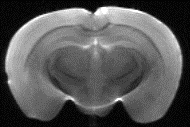
Murine models
The mouse is a small mammal that represents the most used model organism in research. Thorough anatomical and physiological conservation, along with the notion that more than 40% of the human genome has a homologous locus in the mouse genome, support this rodent as a reference disease model. Small mouse size, ease of maintenance and cost-effective housing make it perfect for research purposes. Mice reproduce as often as every three weeks and the average litter consists of three to ten pups, allowing rapid generation of a colony for scientific investigations. With a life expectancy of two to three years, this model allows studies of the complete life cycle, including aging. Notably, the mouse genome can be easily manipulated, allowing researchers to switch-on and off the gene(s) of interest in selected cell populations and at specific time points along development. As such, knock-out and transgenic mice provide a powerful tool and are extremely useful to study complex human diseases, favoring the development of novel therapies.
